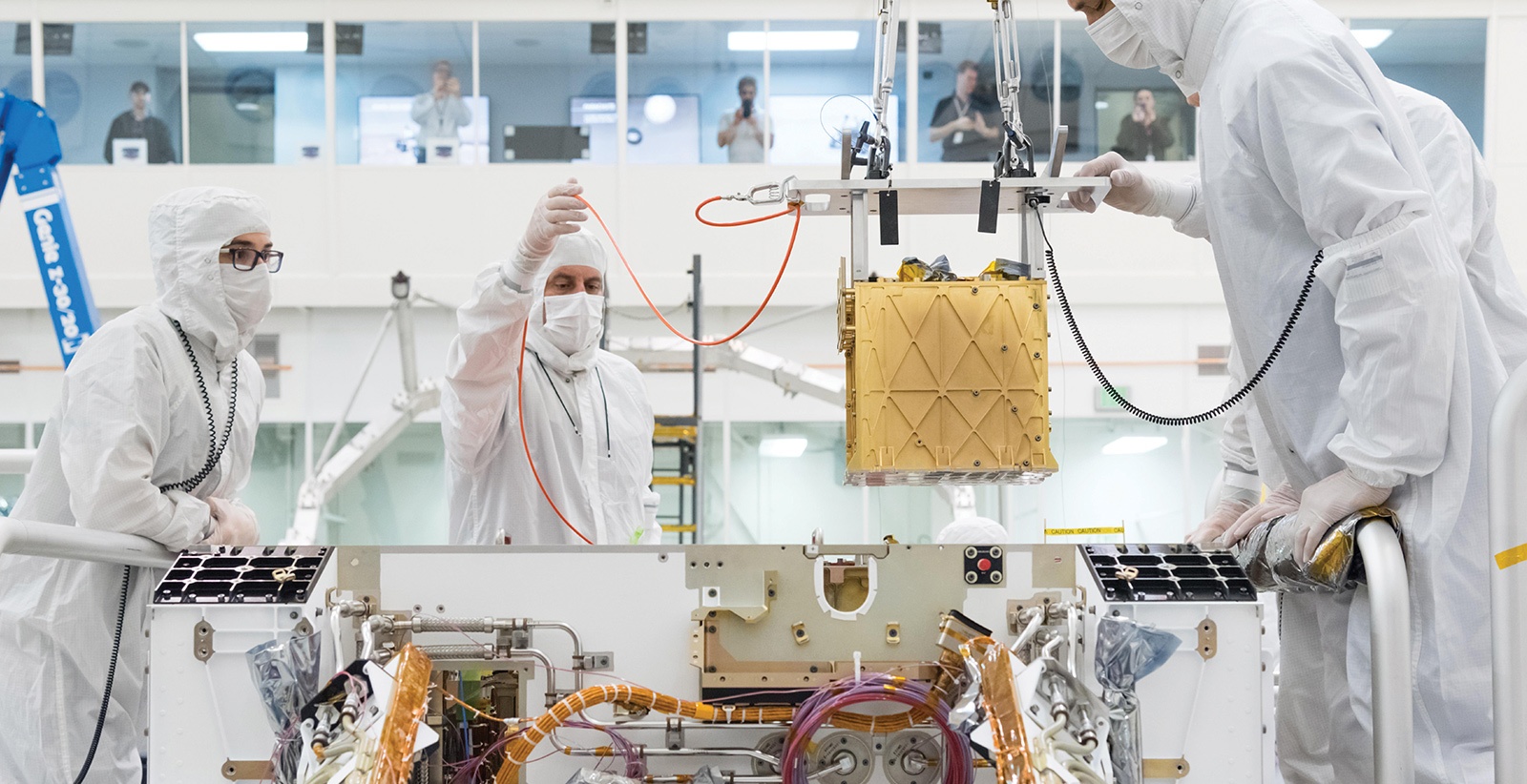Stay Up to Date
Submit your email address to receive the latest industry and Aerospace America news.
The Space Resources Technical Committee advocates affordable, sustainable human space exploration using nonterrestrial natural resources to supply propulsion, power, life-support consumables and manufacturing materials.
The Mars Oxygen In-Situ Resource Utilization Experiment, or MOXIE, the first ISRU project to be launched to another planet, began its journey to Mars aboard the Perseverance rover in July. MOXIE will demonstrate solid oxide electrolysis processing of the thin carbon dioxide atmosphere to produce 6-10 grams of oxygen each hourlong opportunity over the course of the Martian year.
In September, three years after delivering the MOXIE flight hardware, a team from Utah-based OxEon Energy and NASA’s Jet Propulsion Laboratory in California tested a 10-cell solid oxide electrolysis stack, scaled to five-times MOXIE capacity at Mars pressure. This test is part of a scale up to 2-3 kilograms per hour of the rate of oxidizer production needed to fuel rockets to return astronauts to Earth after a Mars mission. In October, OxEon delivered to JPL a system integrating carbon dioxide-steam solid oxide co-electrolysis with a methanation reactor for production of oxygen and methane propellants at Mars pressure.
The use of material resources in space became a more visible part of major space agencies’ mission planning and execution this year. In April, NASA selected three design teams led by Blue Origin, Dynetics and SpaceX to design human lunar landing systems, which all feature in-space oxygen refueling. The recognition of risks posed by landing large, high-thrust spacecraft on unprepared lunar soil prompted research on ISRU-based solutions for landing and launch pads. In March, California-based Masten Space Systems tested sintered Hawaiian basalt tiles made by the Pacific International Space Center for Exploration Systems for two seconds under an oxygen/methane rocket engine exhaust. In October, NASA’s Swamp Works and Masten completed a test design review for upcoming longer-duration, higher-thrust tests of a subscale pad. Texas-based Exploration Architecture Corp. and the University of Texas at San Antonio employed a unique melting and 3D-printing process to achieve a solidified brick of basalt fines for potential landing and launch pads.
Many groups continued development on lunar ISRU payloads. Honeybee Robotics and NASA completed in August a critical design review for the 1-meter TRIDENT, or The Regolith and Ice Drill for Exploration of New Terrains, to equip NASA’s Volatiles Investigating Polar Exploration Rover, or VIPER, for the exploration of icy polar lunar regolith. Early in the year, Space Applications Services-led consortia completed Phase A of the European Space Agency’s Lunar ISRU Demonstration Mission to extract 100 grams of water or equivalent oxygen from lunar regolith using hydrogen reduction, carbothermal reduction and Fray-Farthing-Chen Cambridge processes. In February, NASA’s Space Technology Mission Directorate formed the Lunar Surface Innovation Consortium administered by Johns Hopkins Applied Physics Laboratory to focus collaborative efforts among government, academia, nonprofit organizations and U.S. industry on solving challenges presented by the lunar environment for NASA’s Artemis program. ISRU is one of the alliance’s six focus areas. In June, the Space Technology Mission Directorate also selected several lunar ISRU technology maturation projects for oxygen production from water ice extraction and oxides reduction. In September, NASA teams unveiled the Lunar Water ISRU Measurement Study, which defines a measurement plan to identify and characterize a lunar water reserve for ISRU purposes to provide guidance on scale and requirements for the broad space resources community. In addition, a newly formed NASA Simulant Advisory Committee sent out a survey in September to identify lunar simulant needs for development and testing of lunar ISRU and surface systems.
In August, the Luxembourg Space Agency in cooperation with ESA and the Luxembourg Institute of Science and Technology created the European Space Resources Innovation Center. The founders aim for it to become an internationally recognized center of expertise for scientific, technical, business and economic aspects related to the use of space resources for human exploration and the in-space economy.
Contributors: Koorosh Araghi, Kyla Edison, Michael Hecht, Mathias Link, Diane Linne, Diego Urbina, Sam Ximenes and Kris Zacny
Related Posts
Stay Up to Date
Submit your email address to receive the latest industry and Aerospace America news.




